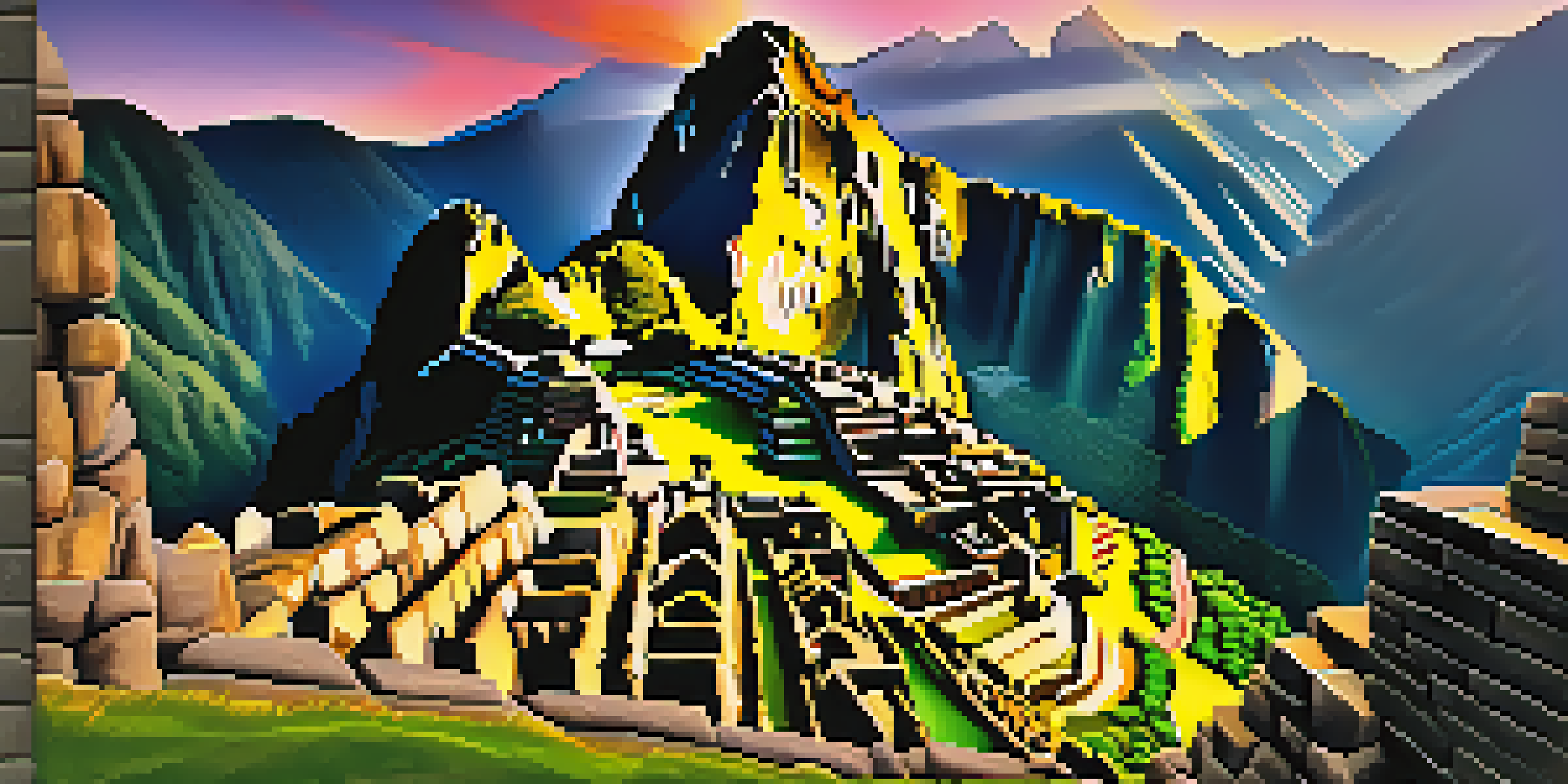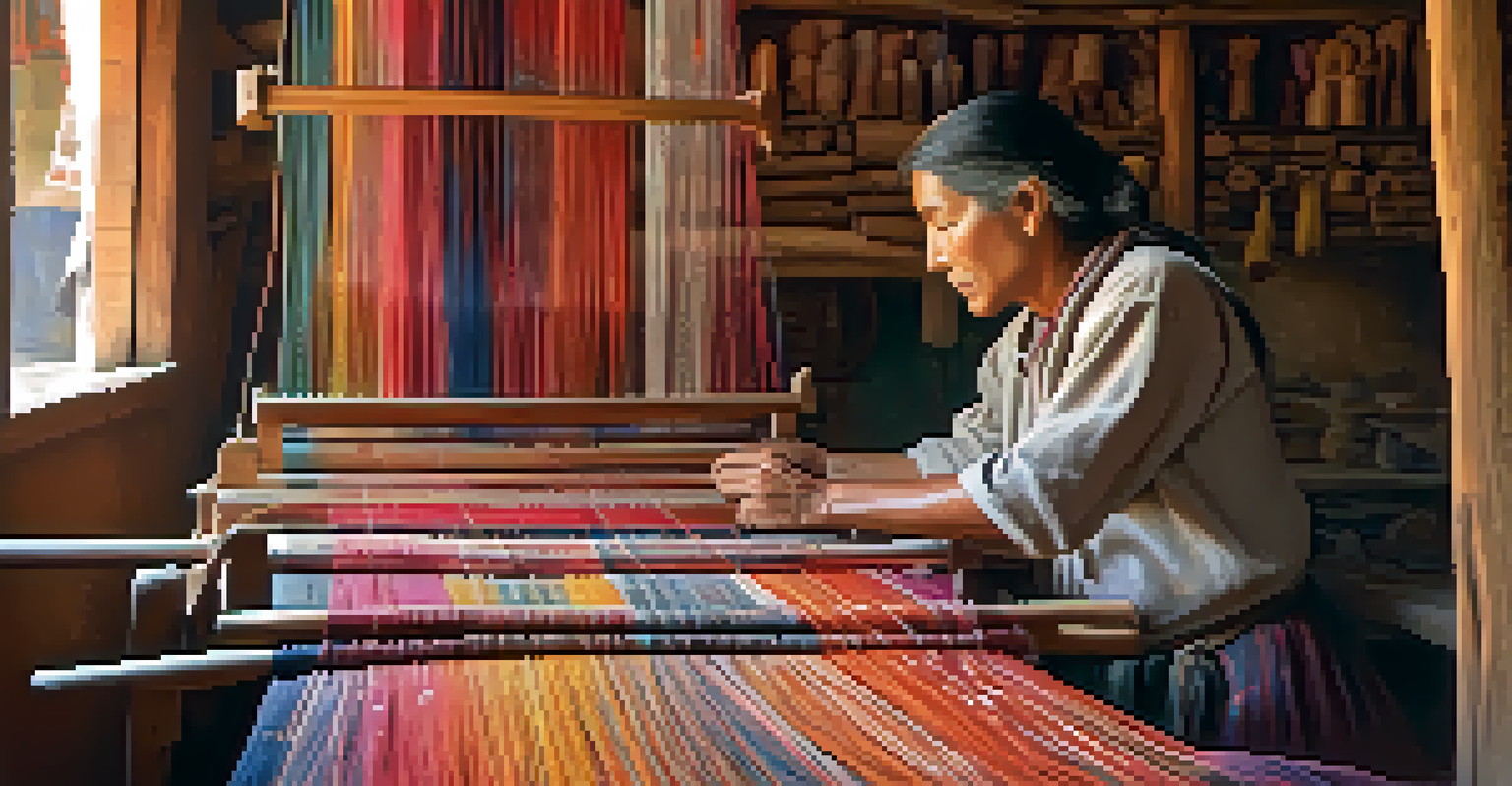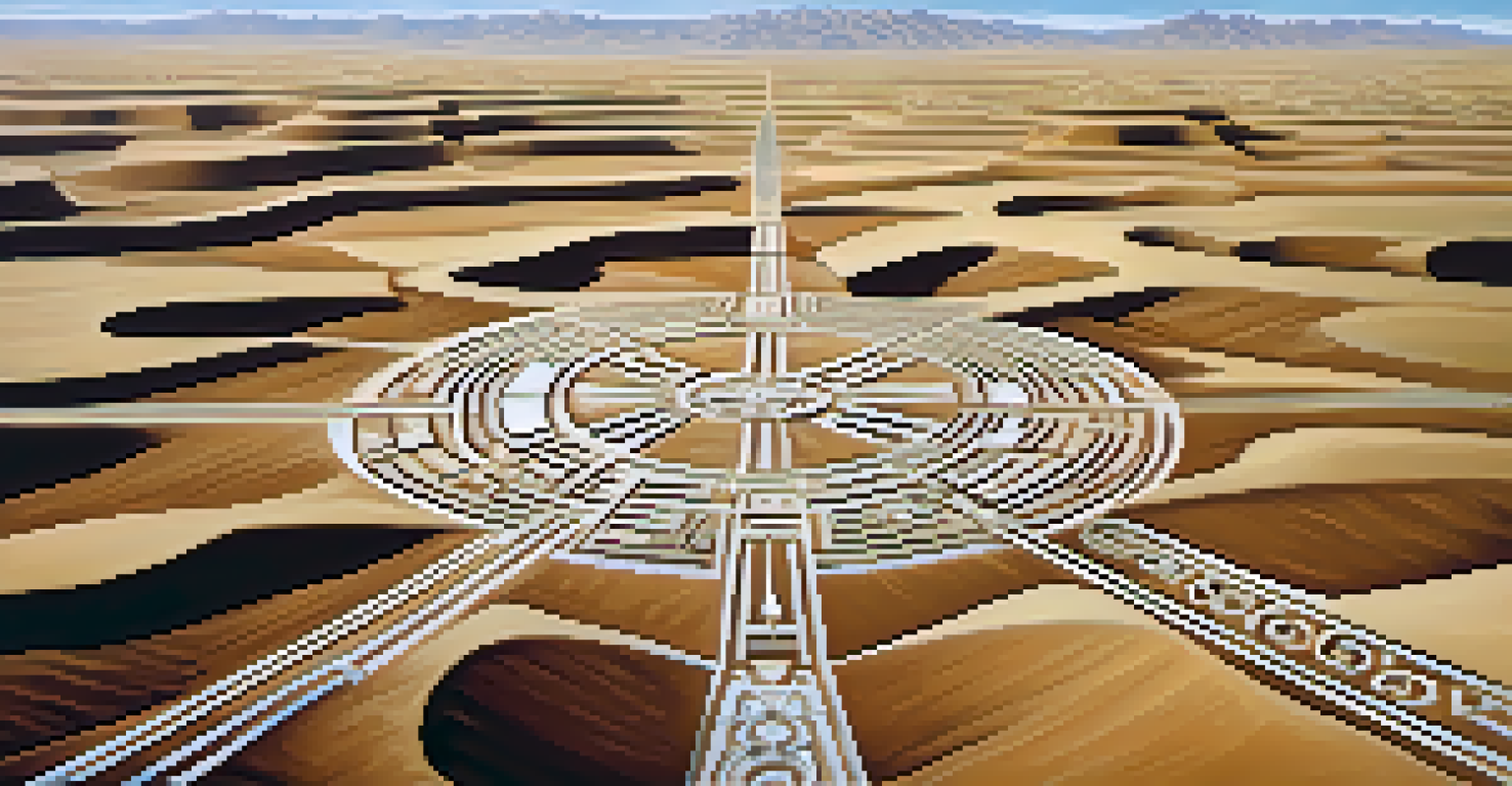Cultural Heritage Sites: Peru's Assets in Tourism Development

The Richness of Peru's Cultural Heritage
Peru is home to an incredible tapestry of cultural heritage, blending Indigenous traditions with colonial history. This rich cultural landscape captivates millions of visitors each year, offering a glimpse into the past and the vibrant customs of the present. From ancient ruins to colonial cities, these sites tell stories that resonate with both locals and tourists alike.
Cultural heritage is the foundation of our identity and our future.
The diversity of Peru's heritage is not just historical; it also encompasses various languages, crafts, and culinary traditions. For instance, the Andean culture is known for its intricate textiles and unique agricultural practices. Such elements make Peru a living museum, where every corner reveals a new layer of cultural significance.
By preserving and promoting these cultural assets, Peru enhances its appeal as a travel destination. Tourists are increasingly seeking authentic experiences that connect them with the local culture, making Peru's heritage sites a central pillar of its tourism strategy.
Machu Picchu: A Global Icon
Machu Picchu stands as one of Peru's most iconic cultural heritage sites, attracting hikers and history buffs from around the globe. This ancient Incan city, nestled high in the Andes Mountains, offers breathtaking views and a sense of mystery that leaves visitors in awe. Its designation as a UNESCO World Heritage Site further emphasizes its global importance.

The journey to Machu Picchu often begins with the Inca Trail, a trek that allows hikers to immerse themselves in the stunning landscapes and ancient ruins along the way. This experience not only highlights the beauty of Peru but also fosters a deeper appreciation for the Incan civilization and its achievements.
Peru's Cultural Richness Attracts Tours
Peru's blend of Indigenous traditions and colonial history creates a vibrant cultural landscape that captivates millions of visitors each year.
As tourism continues to grow around Machu Picchu, it's essential to balance preservation with visitor experience. Sustainable tourism practices ensure that this treasure remains for future generations to explore and enjoy.
The Sacred Valley: A Cultural Hub
The Sacred Valley, located near Cusco, is another culturally rich area that draws tourists eager to learn about the Incan Empire. This lush valley is dotted with archaeological sites, traditional markets, and indigenous communities, offering a multifaceted experience. Visitors can explore ruins such as Ollantaytambo and Pisac while engaging with local artisans who showcase their crafts.
Traveling – it leaves you speechless, then turns you into a storyteller.
The combination of natural beauty and cultural significance makes the Sacred Valley a must-visit destination. Tourists can partake in traditional festivals, taste local cuisine, and even participate in agricultural practices that have been passed down through generations. This connection to the land and its people enriches the travel experience.
As awareness of the Sacred Valley's cultural importance grows, so does the need for responsible tourism initiatives. By promoting sustainable practices, the region can continue to thrive without compromising its heritage.
Cusco: The Historic Capital
Cusco, once the capital of the Incan Empire, is a vibrant city that seamlessly blends ancient history with modern life. The historic center, a UNESCO World Heritage Site, features cobblestone streets, colonial architecture, and stunning churches built atop Incan foundations. This unique juxtaposition attracts tourists eager to explore its rich history.
The city's bustling markets and lively plazas provide visitors with an authentic taste of Peruvian culture. From sampling traditional dishes to witnessing local festivals, Cusco offers a sensory experience that leaves a lasting impression. It's not just a gateway to Machu Picchu; it's a destination in its own right.
Sustainable Tourism Preserves Heritage
Implementing sustainable tourism practices is essential for preserving Peru's cultural sites, ensuring they remain accessible for future generations.
As Cusco continues to develop its tourism industry, maintaining the balance between growth and preservation is crucial. Efforts to safeguard its cultural heritage ensure that future generations can enjoy the beauty and history of this remarkable city.
The Nazca Lines: A Mysterious Wonder
The Nazca Lines are another fascinating example of Peru's cultural heritage that captivates visitors with their mystery and scale. These massive geoglyphs etched into the desert floor depict various animals and shapes, and their purpose remains a subject of intrigue. Viewing them from the air offers a unique perspective that many travelers seek.
The lines serve as a testament to the ingenuity of the Nazca civilization, showcasing their ability to manipulate the landscape for unknown purposes. This blend of art and engineering invites speculation and wonder, making it a popular stop for tourists exploring the southern coast of Peru.
Preserving the Nazca Lines is vital, as they are vulnerable to environmental and human impacts. Sustainable tourism practices are essential to ensure that future generations can continue to marvel at this archaeological wonder.
Exploring Traditional Andean Communities
Beyond famous tourist sites, Peru is rich in traditional Andean communities that offer a glimpse into indigenous lifestyles. Places like Chinchero and Ollantaytambo allow visitors to engage with local cultures through workshops, storytelling, and artisan crafts. These experiences foster a deeper appreciation for the heritage that shapes modern Peru.
Visiting these communities helps support local economies and empowers residents to sustain their traditions. Tourists can learn about ancient agricultural practices, weaving techniques, and the significance of festivals, creating a more meaningful connection to the culture.
Traditional Communities Enhance Travel
Engaging with traditional Andean communities offers tourists authentic experiences that deepen their appreciation for Peru's rich cultural heritage.
As travelers seek authentic experiences, these traditional communities become essential components of Peru's tourism strategy. By promoting cultural tourism, the country can preserve its heritage while providing economic opportunities for local residents.
The Role of UNESCO in Heritage Preservation
UNESCO plays a crucial role in the preservation of Peru's cultural heritage by designating sites as World Heritage. This recognition not only elevates the global profile of these sites but also emphasizes the importance of their preservation. Peru's commitment to protecting these treasures is vital for sustainable tourism development.
The UNESCO designation helps attract funding and support for conservation efforts, ensuring that sites like Machu Picchu and Cusco maintain their integrity. This collaboration between local communities and international organizations fosters a shared responsibility for preserving cultural heritage.

By understanding the significance of these designations, tourists become more aware of their impact on the sites they visit. Responsible tourism practices help safeguard these cultural assets for future generations to enjoy.
Future Trends in Cultural Heritage Tourism
As the world becomes increasingly interconnected, trends in cultural heritage tourism are evolving. Tourists are now more interested in immersive experiences that allow them to connect with local cultures on a deeper level. This shift presents an opportunity for Peru to showcase its rich heritage in new and exciting ways.
Technology also plays a role in shaping the future of tourism. Virtual reality experiences, online guided tours, and interactive apps can enhance visitors' understanding of Peru's cultural sites. Embracing these innovations while maintaining authenticity will be key to attracting a new generation of travelers.
Ultimately, the future of cultural heritage tourism in Peru hinges on sustainability and community involvement. By prioritizing these values, Peru can continue to thrive as a premier destination for cultural exploration.